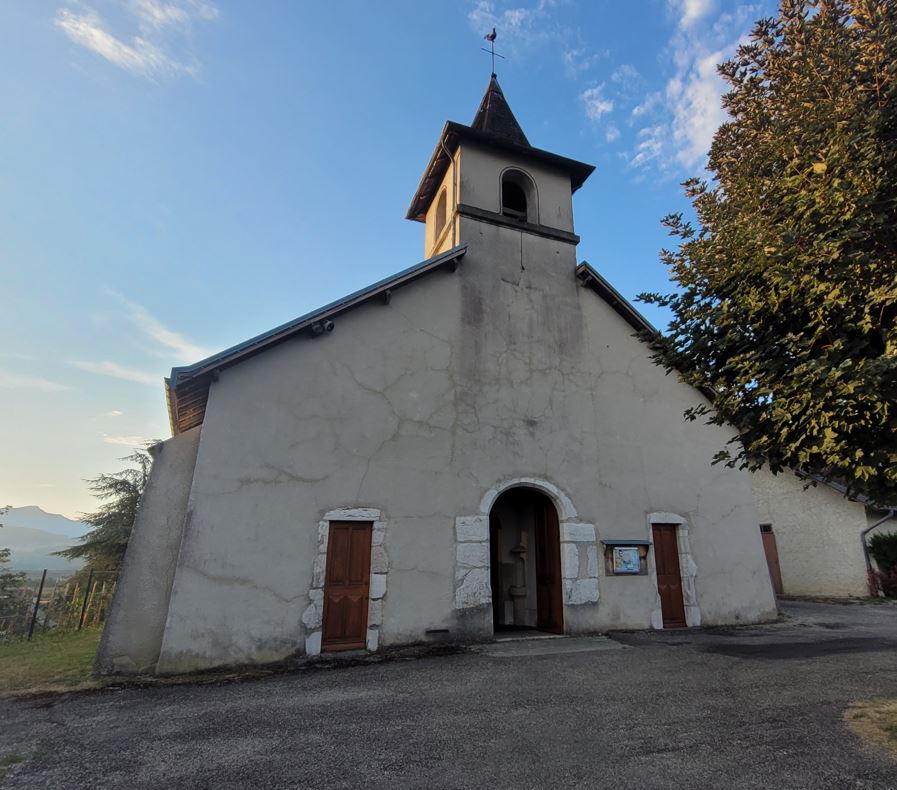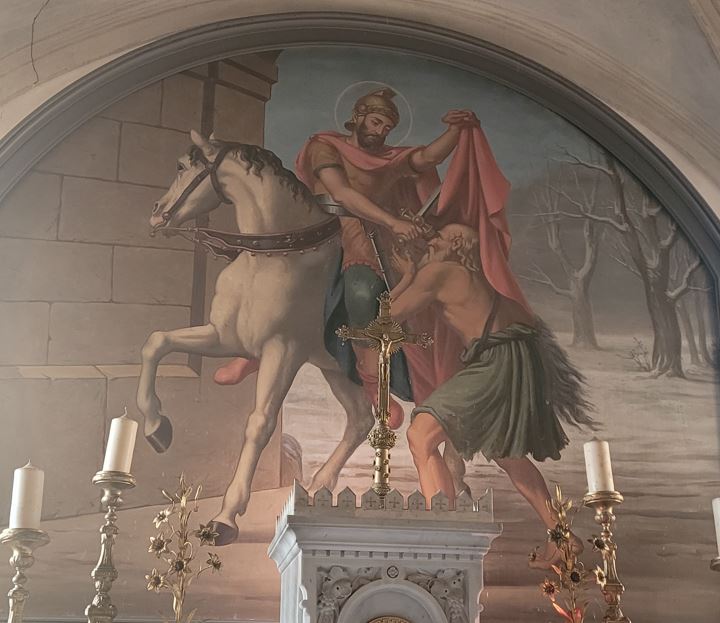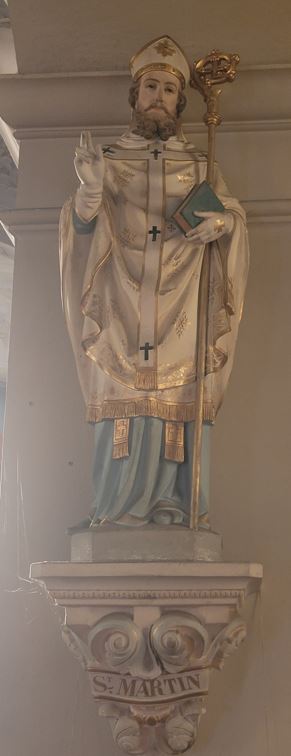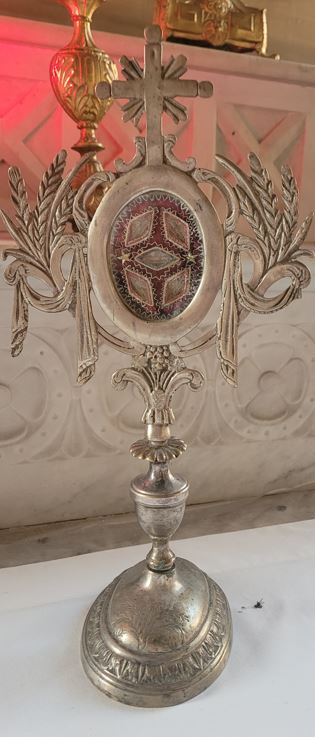La première mention de l’église Saint-Martin de Saint-Martin-de-Vaulserre date de 1142 dans la bulle du pape Innocent II qui confirme les droits de l’archevêque de Belley. Le chœur, à chevet plat, menaçant de ruine, est reconstruit sur les plans de l’architecte Caillé en 1839.
L’église est construite en Pisé, technique consistant à la construction de murs massifs en fines couches de terre humide dans des coffrages.
La fresque du début du XXe siècle date de « chemin du Baroque », lorsque les peintres italiens, allant vers les Flandres, peignaient des fresques en remerciement du gîte et du couvert lors de la pause ou ils faisaient des travaux de bûcheronnage. Ici, il s’agit d’une Charité de saint Martin ou le saint est représenté en soldat casqué et barbu, en train de commencer la coupe de son manteau, le pauvre se trouvant sous la partie qui va lui revenir. Le pauvre est à demi-nu, avec un pagne vert.
L’église possède également une statue de saint Martin en évêque, mitré et barbu, tenant sa crosse du la main gauche et faisant le geste de bénédiction de la main droite. L’église conserve également un reliquaire-monstrance, avec une relique de saint Martin au centre, entouré des reliques de saint Nicolas, saint Antoine, saint Roch et saint Victor.
The first mention of the church of Saint-Martin de Saint-Martin-de-Vaulserre dates back to 1142 in a bull issued by Pope Innocent II confirming the rights of the archbishop of Belley. The choir, with its flat chevet, was in danger of ruin and was rebuilt to the plans of the architect Caillé in 1839.
The church was built in Pisé, a technique involving the construction of solid walls in thin layers of damp earth in formwork.
The early 20th-century fresco dates from the « Baroque Way », when Italian painters on their way to Flanders painted frescoes as a thank-you for board and lodging when they took a break from lumbering. Here, we have the Charity of Saint Martin, in which the saint is depicted as a helmeted, bearded soldier, starting to cut off his coat, with the poor man underneath. The poor man is half-naked, wearing a green loincloth.
The church also has a statue of Saint Martin as a bishop, mitred and bearded, holding his crozier in his left hand and making the gesture of blessing with his right. The church also houses a reliquary-monstrance, with a relic of Saint Martin in the centre, surrounded by relics of Saint Nicholas, Saint Anthony, Saint Roch and Saint Victor.




